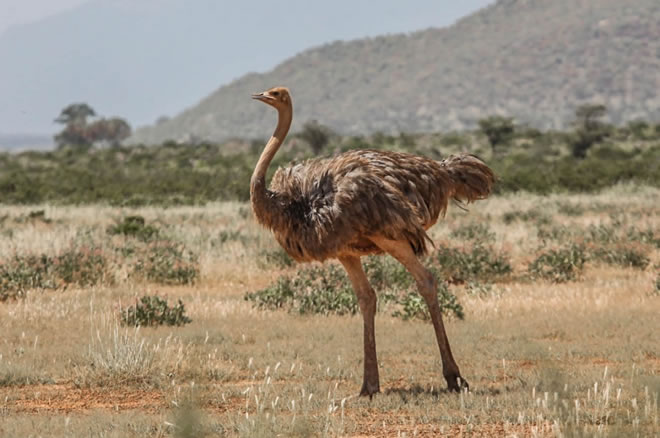
A Somali ostrich - ninara / Flickr

By John Platt shines
Tuesday, July 29, 2014
Previously considered a subspecies, the Somali ostrich has now been added — along with 360 other newly discovered bird species — to the International Union for Conservation of Nature's Red List of Threatened Species.
The Red List update come from an assessment of the world's birds of prey, seabirds, water birds, owls and similar species (collectively known as nonpasserine birds, because all other birds come from the order Passeriformes) by the conservation organization BirdLife International.
The Somali ostrich and the other 360 new species were effectively hidden in plain sight for decades. Because they were not recognized as species until now, no one had ever assessed their conservation risks. And they are definitely at risk: According to BirdLife, 25% of these newly recognized species are considered threatened and have been added to the Red List under its vulnerable, endangered or critically endangered categories. That's compared with just 13% of all bird species that have been identified as being at similar risk.
The Somali ostrich and other birds were finally recognized as new species because BirdLife created a new system to categorize bird taxonomy in order to create a more consistent approach for determining species' conservation risks.
"The new species criteria are basically a scoring system of physical characteristics — plumage, song, etcetera — that are used to distinguish between closely related species," says Martin Fowlie from BirdLife's communications team.
The new criterial focus on mating signals, songs and plumage because "they play a role in setting real biological species limits, by determining whether interbreeding can or will occur," University of Oxford zoology lecturer Joseph Tobias explained in a recent issue of World BirdWatch magazine (pdf). It does not, however, use molecular data because "there is currently no agreement about a surefire threshold of genetic divergence indicative of species status," Tobias wrote.
The Somali ostrich faces numerous threats — egg collection, hunting and habitat loss among them — but at least it's still around. Other new (and previously hidden) species added to the Red List may not be so lucky. They include the Belém curassow (Crax pinima) of Brazil, which hasn't been seen since 1978. It lives (or lived) in what is now the most heavily deforested region of the Amazon rainforest.
The blue-bearded helmetcrest (Oxypogon cyanolaemus), meanwhile, hasn't been seen since 1946 and is only known from museum samples. The Colombian hummingbird lived in a forest that has since been burned down to make way for agriculture.
In addition to the new species the Red List update also provides new information on several previously known birds. The bearded vulture (Gypaetus barbatus), which faces threats from diclofenac poisoning and collisions with power lines is now listed as near threatened.
The Bugun liocichla (Liocichla bugunorum) of the Himalayas (shown to the right) has been reassessed as critically endangered following the construction of a road through its only habitats, which have also suffered fires.
The second half of BirdLife's comprehensive review of the world's feathered species is due in 2016 and will cover all 5,000 or so passerine birds — including, no doubt, a few more new species.
About the Author: Twice a week, John Platt shines a light on endangered species from all over the globe, exploring not just why they are dying out but also what's being done to rescue them from oblivion. Follow on Twitter @johnrplatt.